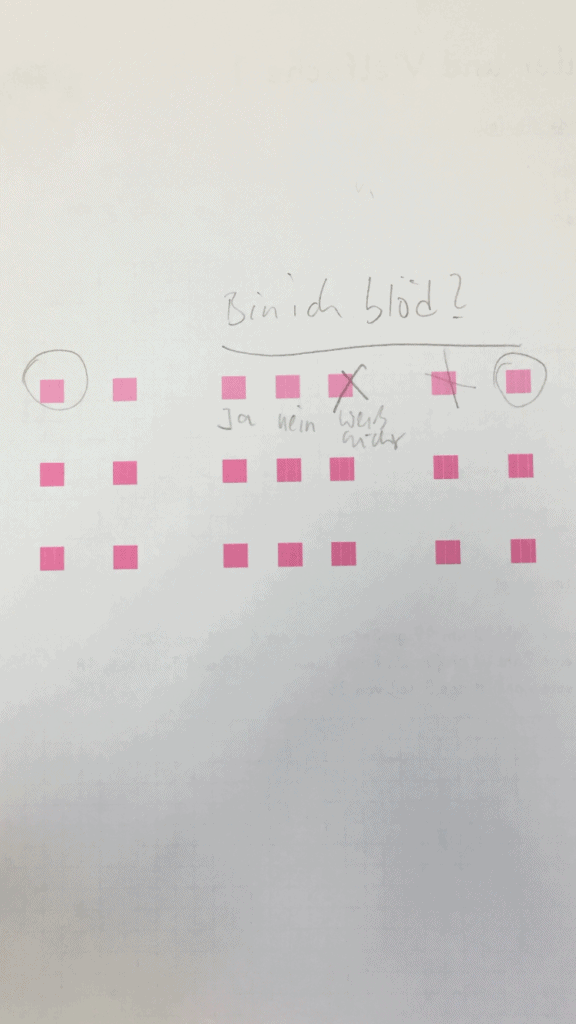12 Okt On the paranoia of the answer and the power of the question

So, there was once a guy of indentified age and posture that had an argument with a printer. He yelled and shouted, he screamed like a street maniac and he cursed like a 12 year old.
HP ENVY Photo 7855 All-in-One Printer 3.9
(223)
Write a review
ENERGY STAR
Free shipping! | Save $90 instantly | Free $5 Instant Ink prepaid eCode with select printers. (Limit 2) Print, Fax, Scan, Copy, Web, Photo
Print speed ISO: Up to 15 ppm black, up to 10 ppm color
Easily print, copy, scan, and fax, with a seamless, smartphone-style 2.7-inch color touchscreen
Instant Ink ready; High yield ink available
Fuck off! Scheiße and other obscure philosophies of the Im-Polite left his mouth. The Printer won. He giggled. Their marriage is next week.
On the paranoia of the answer
and the power of the question:
The epistemic value of posing a question remains till this day if not the most essential, one of the most powerful, procedures of critical thinking. The notion that a scientific proof is supposed to enter the realm of its hardly fought for “objectivity” only after being subjected to the tortures of the almighty question mark. In other words: posing questions is what makes the troublesome journey of searching for an answer worth enduring. Otherwise, the wise thing would simply be to make out with the first stiff wall you’ll come across.
Grounded upon the late products of scientific thinking and Philosophies of the Real dating back to the age of Enlightenment, the dually codified scheme that stretches between an all-powerful question mark and a timid exclamation point has largely shaped the way we decide to decipher that things we do know, from the ones we strive to understand.
Yet, besides the undeniable charm of looking puzzled at a gallery opening or gently stroking your beard while considering the inconsiderable of contemporary art, the politics of the question appear to make sense in compliance with the promise of an answer, regardless of its clear abillity to be satisfied.
A precise and rigorous process of theorizing and conceptualizing the duality structure of “question – answer” and in particular in the fascinating and odd world of the monster called ART starts with the sad realization of its impossibility. The manner through which academic knowledge was structured and tried to force the wonderlands of artistic expression into its narrow limits becomes an inadequate tool for analyzing the concept of the question, even if that question remains questionable.
In other words, it doesn’t always matter if a logically formulated and cohesive argument cannot satisfy our need for completion, because it’s the agonizing ecstasy of feeling like the village idiot that makes the whole process worth going through. Revisiting Lyotards depressing postmodern dreams is the key to unlock what makes all this crap something fascinating. The transition from a traditional marxist understanding of production and need flows into the proxies of Desire. Value, in this case the value of a question, can’t be defined with regards to any kind of „function“, and therefore its purpose remains tangled in a mess of theories of capitalist paranoia. The Value of the politics of the question is not a product of usage, but rather of yearning desire. A desire to pose that epistemic formula that we might be able to solve, or not.
Something bound to irritate you, or leave you complete unimpressed,
to stir your guts or tickle the back of your ice-cube-sized heart.
One that crooks your smile and makes painkiller companies richer by the art fair.
P.S.
Please ask your doctor or pharmacist about the effects of too much art on your consciousness.


